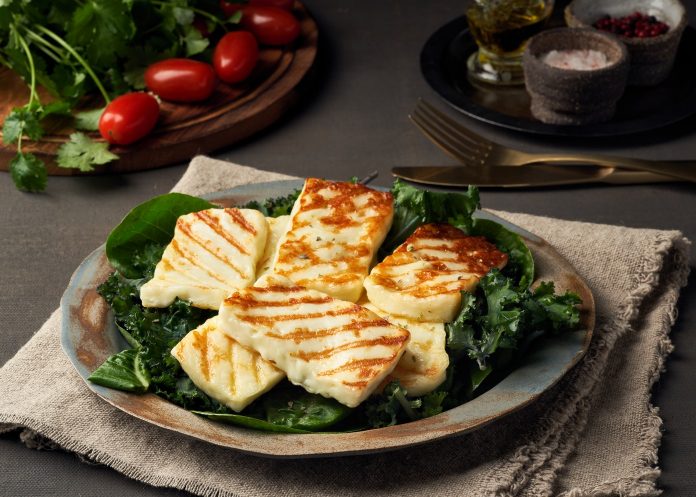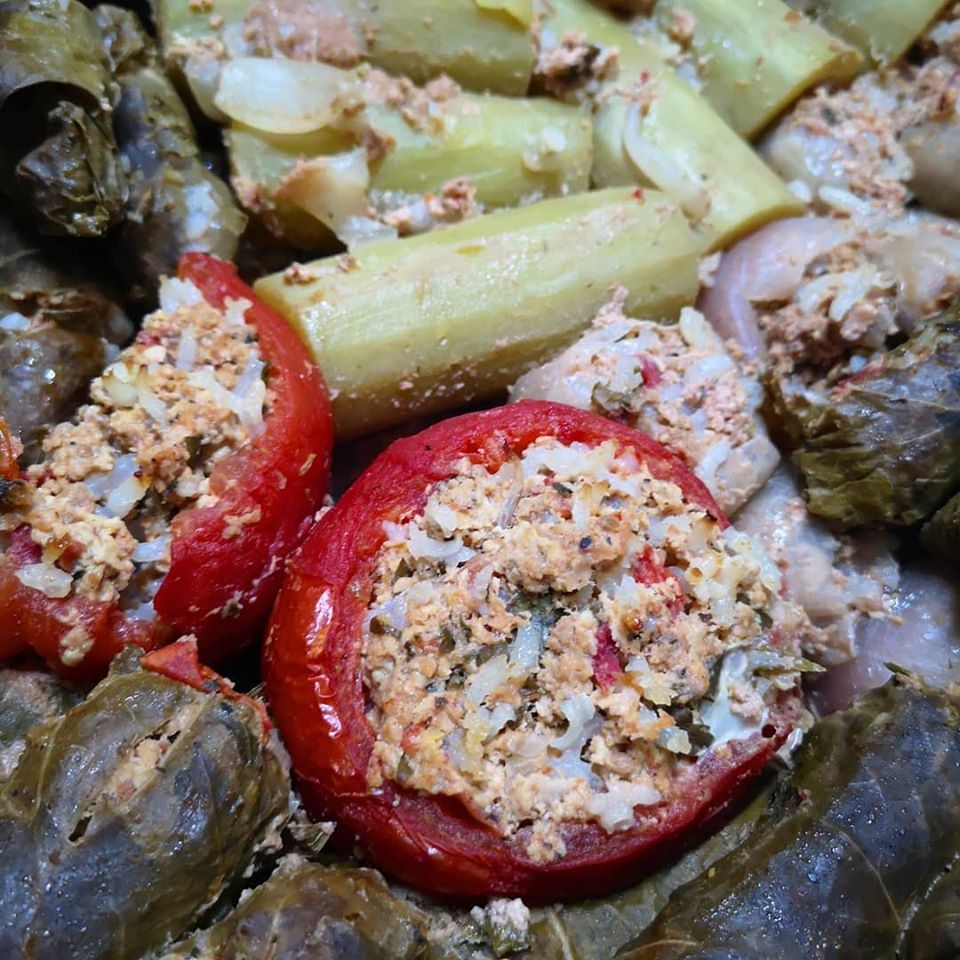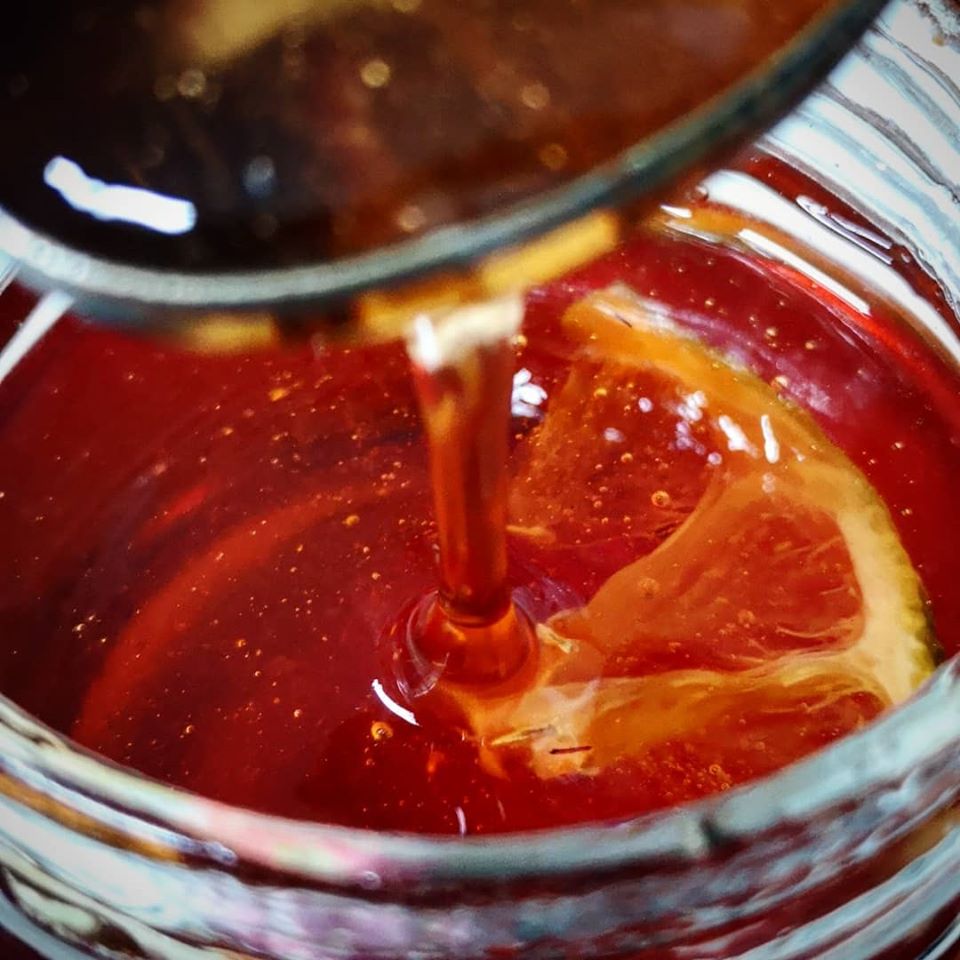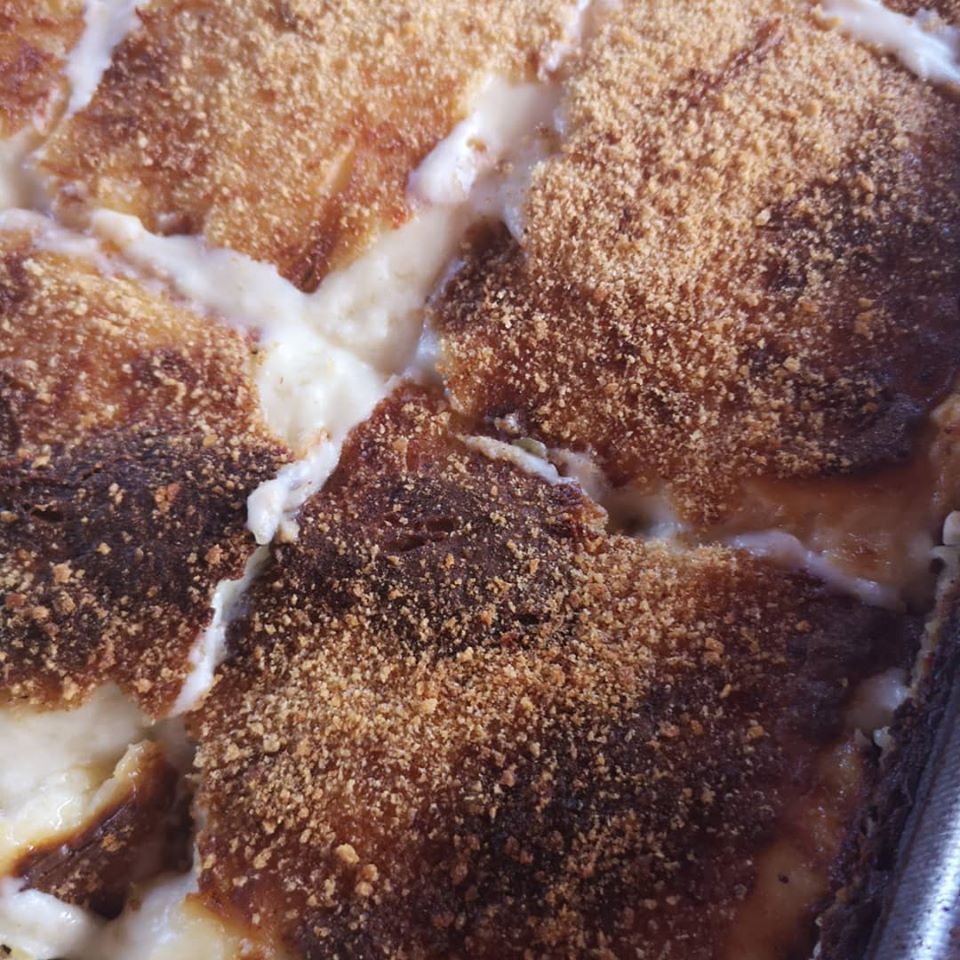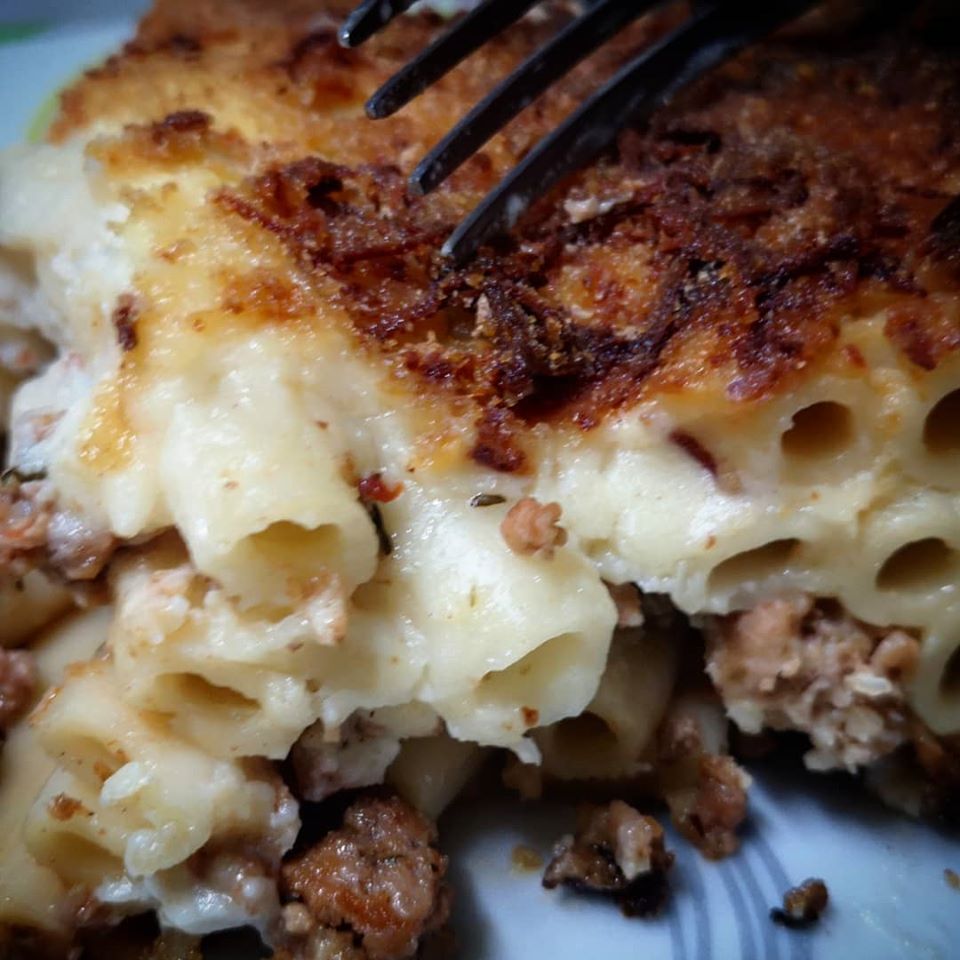The ritual of sharing good, fresh local cuisine is an important part of the island’s culture, and is intrinsically linked with every social event, from family gatherings and special occasions to religious festivals… each marked with its own distinct delicacies and recipes.
From hearty meat dishes and specialty cheeses to unique desserts of carob and grape, the Cypriot cuisine is an exotic blend of Greek and Middle Eastern cultures, sprinkled with remnants of ancient civilisations such as indigenous Roman root vegetables or old Phoenician delicacies.
And it is no secret that the ‘Mediterranean diet’ is considered to be of the healthiest, thanks to its abundance of heart-healthy olive oil, pulses, lean meat, local herbs and freshly grown fruits and vegetables.
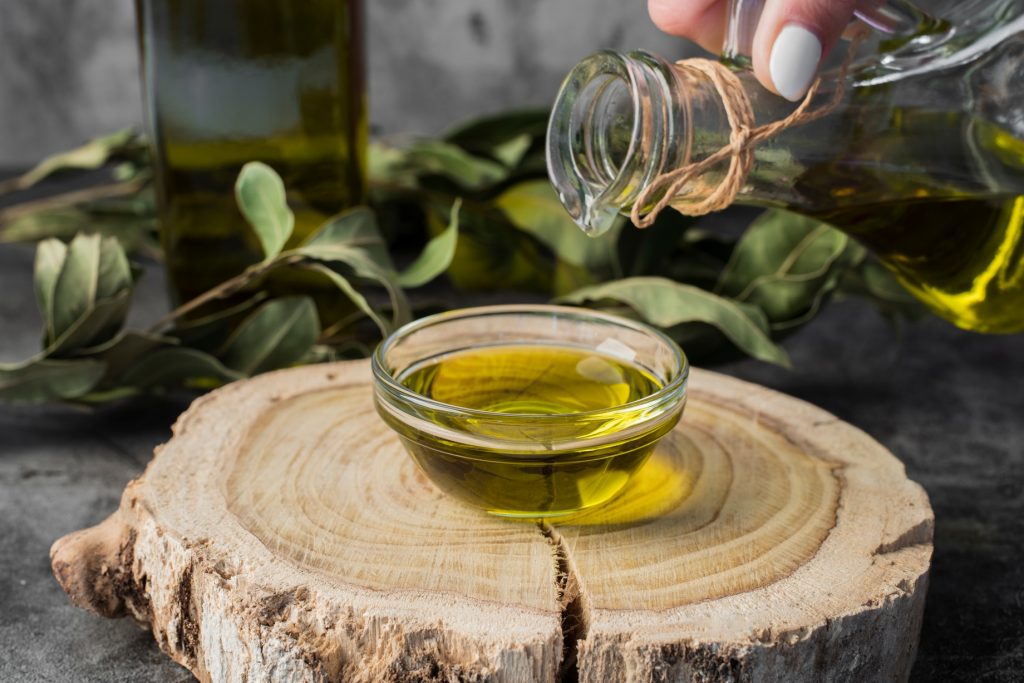
The food of Cyprus reflects the rich and turbulent history of the island and its indelible Greek culture. You will find tastes influenced by the Middle East, Asia Minor and the Venetians, all using fresh local ingredients, herbs and spices and olive oil. The Mediterranean diet, with its grains and pulses, sun-ripened fresh fruit and vegetables, high-protein fish, lean meat and poultry and wine is a healthy option as well as an irresistible temptation. Kopiaste is a word that you are almost certain to hear in Cyprus, it means ‘join us’ and is always meant sincerely.
One great way to experience a wide range of the foods that Cypriots enjoy is to visit a typical local tavern and ask for mezedes. You will receive dish after dish of different tastes, both meat and vegetable but be warned – pace yourself because the food is so good you could end up too full to go on by the time you get half way through! Cyprus is also rich in fish taverns and here you can experience yet another gastronomic delight surrounded by Cypriot families.
Pastitsio – minced meat in a rich and delicious creamy sauce, afelia – pork in a red wine sauce, are just two of the wide range of dishes you can try, and to follow perhaps preserved fruit or nuts that can be enjoyed with a Cyprus coffee, sketo, metrio or glyko, plain, medium or sweet. Halloumi cheese is one of the few cheeses that can be enjoyed grilled, fried or simply plain. The choice of food is as varied as the landscape.
Mezedes
No visit to Cyprus is complete without enjoying the traditional meal of many small dishes known as ‘meze’.
This large feast, which has been a popular part of the Cypriot culture for many centuries, is more of a social event than a formal meal, with many dishes shared around the table with family and friends.
So, ‘kopiasteke kali orexi’, which means ‘welcome, and bon appetite’, you will soon fall in love with the social way of eating that the authentic Cypriot meze offers!
Trachanas Soup (Cracked Wheat)
Trachanas is a sour soup that is traditionally eaten in the colder winter months. Is made from a mixture of crushed wheat and milk, soured with yoghurt, that has been formed into small pieces and dried. The addition of small cubes of Halloumi cheese or chicken pieces make this soup even heartier.
Kolokasi (Taro Root)
Kolokasi (Taro) is a root vegetable that grows in Cyprus. One of the most popular Cypriot dishes cooked with pork meat and cellery in tomato sauce.
Koupepia
Vine leaves filled with ground pork or veal, rice, fresh herbs and seasoning, cooked with tomato and lemon juice.
Cyprus moussaka
Layers of vegetables (eggplant, zucchini, potatoes) with ground pork and bechamel sauce (white sauce)
Pork Afelia
Afelia is a traditional Cypriot dish of small pieces of fried pork meat cooked with coriander in red dry wine and.
Lountza – Sun-dried or Smoked (Pork Loin)
Ιs made of pork tenderloin, which is first brined and marinated in red wine, then dried in sun and smoked.
Grilled Halloumi Cheese
The island’s most famous cheese – Halloumi – is a delicious and is fantastic both cold and cooked (grilled or fried). Cyprus Cheese Halloumi made from goat’s and sheep’s milk or both
Tahini Dip
Tahini is rich, creamy sause made from sesame seeds
Traditional Bread
Made with Cyprus dough (prozymi)
Anari Cheese Pies pourekkia
Τraditional Cypriot pastry that is usually made with thin and flaky “phyllo” dough and filled with soft cypruscheese “anari” or crème.
These delicious little pastries (similar to turnovers) have a sweet Anari cheese and cinnamon filling and are fried, then dusted with icing sugar or dipped in syrup. Some variations also add rosewater or citrus blossom water to the filling.
Daktyla (Ladies Fingers)
Τraditional Cypriot pastry (meaning ladies fingers) made with crispy fried phyllo dipped in sugar syrup filled with almonds and cinnamon.
Loukoumades (Honey Dough Balls)
Knowedas the Greek doughnuts. Is made with yeast, flour and water fried in balls in hot oil and dipped in sugar syrup.
The sweet honey donuts called Loukoumades are a very popular treat, enjoyed mainly at festivals, from street vendors and at special coffee shops. The batter is made from flour, yeast, water.
They are deep-fried in very hot oil until golden.
Once the Loukoumades are removed from the oil, they are drained and immediately drenched in sweet syrup or honey and dusted with cinnamon.
Talatouri
Talatouri is a sour yoghurt, garlic and mint dip, that is a popular accompaniment to barbecued meats, or in the national take-away of Souvlakia. It is also one of the dips served as part of a meze meal.
Yoghurt
Real, traditional Cypriot yoghurt is made of sheep and/or goat milk. Set in clay pots, it has a live culture and is fairly sour!
Zaladina
Zaladina is a gelatine and pork dish that although it may not sound particularly appetising, is actually a great delicacy that is scented with citrus juice and fresh Cypriot rosemary!
Small pieces of pork are boiled in salted water, deboned and boiled again in the juices that have been blended with citrus fruit and vinegar, with rosemary added. The mixture is then left to cool and set. Zaladina is eaten cold as a starter or as part of a meze meal.
Sheftalies
The traditional Cypriot Sheftalia is a soft juicy high-fat content Sausage made with pork or lamb shoulder or a combination of both.
Is the perfect addition to the famous Cyprus Souvlaki kebab.
Koupes
Dating back to Phoenician times, Koupes are one of the island’s most ancient snacks. They are believed to have originated in Larnaka – the island’s oldest, continuously inhabited region.
This is a deep-fried handheld snack, shaped like a miniature American football. It has a crust made of bulgur wheat, which is stuffed with minced meat, onions, parsley and spices. Koupes are delicious served with a good squeeze of lemon juice. They also make an excellent snack for the fasting period, when the meat is substituted with mushrooms. You can find koupes at most local 24-hour bakeries and in some restaurants.
Avgolemono Soup
Avgolemono is a rice and chicken soup thickened with egg and lemon. It is aptly named from the Greek words for egg ‘avgo’ and lemon ‘lemoni’. This is a traditional Easter soup that is eaten to break the 40 day fast, typically after midnight mass, but it is also made throughout the year for its soothing and nourishing qualities, making it an ideal food for convalescents.
Souvlakia (Kebab)
Souvlakia are small cubes of barbequed meat that make up part of the healthy and hearty national take-away, kebab.
Chicken, pork and sometimes lamb can be made into Souvlakia. The small tender cubes of meat are skewered and charcoal-grilled or barbequed slowly, then stuffed into split pita bread with cucumber, tomato, onion and parsley.
Dips such as Talatouri (yoghurt and mint) and Tahini (sesame seed) can be added, as well as the popular Sheftalia sausage (seasoned minced meat wrapped in caul fat).
Tavas
This traditional dish of pork, lamb or veal with potatoes, tomatoes, carrots and onion is infused with cumin and slow-cooked for several hours. It is served in the same clay pot it was cooked in, straight from the oven.
Calamari (Squid)
Freshly caught calamari (squid) is a staple menu item at most restaurants on the island, and a particular favourite with visitors. It can be served as deep-fried rings, fried whole (baby calamari), or grilled whole and served with lemon juice, parsley and olive oil.
The secret to the fried dish is in the light batter, and you will usually enjoy it with chips made from delicious Cypriot potatoes. Both the fried and grilled versions often make up part of a meze meal.
Kapari (Capers)
Kapari is the pickled tender leaves, buds and seed pods of wild capers, usually foraged in rocky and mountainous areas during the spring months.
Preparing them requires a time-consuming process of removing the thorns, soaking the capers in water in a dark place for four days; removing the murky water and soaking them in fresh water again until the stems turn a darker green colour. After that, they are soaked in brine and then in wine vinegar to pickle.
Kapari leaves are served as a side dish for many types of meals or as part of a meze. The buds and seed pods are used to enhance many cooked dishes, or as a topping on a fresh Cypriot salad.
Louvi
Louvi is a healthy dish of black-eyed beans, served with olive oil, lemon juice canned fish and salad vegetables.
Vegetables such as Swiss chard (lahana) and spinach, are usually cooked with dry louvi, and zucchini or young marrow are cooked with fresh green louvi. This dish is very popular during Lent, when it is eaten without the addition of the canned fish.
Bamia (Okra)
Bamia is a vegetarian dish made with summer okra, tomatoes, onions, olive oil and seasonings.
It is healthy and light and can be served hot or cold. In season, it often appears as part of a meze meal.
Anari Cheese
Anari is a white, soft – creamy low-fatcheese and you can have it both salted and unsalted fresh.
Hiromeri
Hiromeri is a flavoursome delicacy of smoked pork ham. It is salted and marinated in red wine and seasoning before being pressed under heavy weights, then finally smoked. Hiromeri is served as a snack with drinks, particularly with wine and Zivania (a strong local spirit), cut into very small pieces and served alongside other nibbles.
Tsamarella
Tsamarella is a pieces of fatty goat meat dried in the sun for approximately 10 days, that is considered to be a delicacy as part of the meze meal.
Like Hiromeri, Tsamarella is also an ideal accompaniment to Zivania (a strong local spirit).
Loukanika / Pastourma
Loukanika and pastourma is village sausages. Loukanika is made with pork meat and Pastourma made with beef meat.
The different is that pastourma is that is very spicy but both contain red dry wine, salt, garlic and spices, including coriander seeds and black pepper
Glyka tou Koutaliou (Spoon Sweets – Preserves)
Μade when fruits and vegetables cooked for days in homemade sugar syrup typically served on a small spoon and offered to guests as a symbol of hospitality, always with a glass of cold water.
Almost every Cypriot home had specially-made delicate serving dishes and tiny silver forks and spoons with which they served the sweets to their guests.
The family recipe for making the preserves was traditionally passed down to the daughters.
Some famous spoon sweets
- –Bergamot
- –Kitromilo
- –cherries
- –Rose Petals
- –Walnut
Pastelli (Carob Toffee)
The nutritional sweet of Pastelli is made with the syrup of carob pods, produced by boiling their pulp until it forms a thick, sticky liquid similar to treacle.
Whilst carobs are in abundance on the island, Pastelli is very special as it is handmade by repeatedly and painstakingly stretching and pulling the carob toffee.
Carob Syrup
Delicious, sticky carob syrup may taste like it belongs in the dessert-section, but it is actually an extremely nutritious product made with locally grown carob pods that can be enjoyed in place of honey and other sweeteners.
KalonPrama (Shamali)
Shamali I a traditional juicy semolina cake with rosewater, lemon or orange syrup. In Cyprus it is known as “kaloprama”, which means «good thing»
Pastelaki (Nut Brittle)
Pastelaki is a traditional cereal snack made with sesame locally grown nuts and honey or carob syrup
Palouze
The grape jelly of Palouze is a wonderfully traditional Cypriot dessert made of grape juice (must). Grapes that grown in the winemaking villages of the island.
Galatoboureko
Galatopoureko is a creamy custard pie with “filo” pastry stuffed with cream. After is baked is covered with syrup that is traditionally made from sugar, lemon, cinnamon and cloves.
Kataifi
The pastry-based dessert of Kataifi has ancient Middle Eastern roots on the island and is a crispy, syrupy treat characterised by its shredded filo pastry.
The filling is traditionally made with walnuts, cloves, cinnamon and honey, although other nuts can be used. This filling is wrapped in buttered filo, baked, and then drenched in syrup to give it a unique crispy-yet-sticky texture.
Loukoumi (Cyprus Delight)
Cyprus is famous for its delicious soft, chewy sweets “loukoumi”, which have been produced on the island for centuries
Along with a number of other villages, Geroskipou – in the Pafos district – still traditionally produces these delicious delights.
You can find in a number of different flavours. The most traditional is rose, followed by lemon, mastic and bergamot, although you can also find more modern flavours – including chocolate – with or without nuts.
It goes without saying that you shouldn’t leave the island without taste loukoumi
Soutzoukos
Soutzoukos is a traditional, chewy sweet made from grape juice that has a unique appearance (it looks similar to a candle!), and is popular at traditional festivals.
The sweet is made using the surplus of grapes after the grape harvest, which is why it is commonly made in the wine producing villages of the Troodos and Pafos regions.
Shamishi
These fried semolina pastries often come hand-in-hand with Loukmades (honey donuts) as they tend to be made by the same vendors, mainly at traditional festivals and fairs.
The dough pockets are filled with a cooked sweet semolina paste, fried to perfection then dusted with icing sugar and cinnamon. As with most recipes, there are variations with some also adding mastic and orange blossom water to the semolina filling.
Kolokoti
A Kolokoti is simply a delicious pumpkin pie – enjoyed as a handheld snack and widely available from the local 24-hour bakeries.
The pastry is stuffed with diced pumpkin, cracked wheat (bulgar), olive oil and raisins, seasoned with cinnamon and sometimes dill, then sealed like a calzone in a crescent shape. They are especially popular as a Lenten food.
Koulouri Bread
Koulouri is a very tasty bread, with an almost cake-like texture, that is covered in sesame seeds, caraway seeds and aniseed.
It is commonly baked as one large ring, or little individual rings, or in a long loaf with oblong pieces marked out to break off easily.
Pita Bread
The island’s cuisine wouldn’t be complete without Pita bread – the leavened flat bread made in ovals of varying sizes that can be split to form a pocket.
The ‘pockets’ are traditionally filled with small cubes of barbecued meat to form the national take-away dish, Souvlakia, or with Halloumi cheese and Lountza (cured pork meat) for a truly Cypriot version of a sandwich!
Kiofterka
Kiofterka is a thick, jelly-type sweet made from boiled grape juice, thickened with a little flour and then dried in the sun. It is delicately flavoured with rose water.
Tahinopita
A Tahinopita is a sweet pastry that is made of tahini paste (roasted sesame seed puree), with local carob syrup. Although enjoyed all year round, they are particularly popular during Lent.
Kourampiedes
Kourampiedes are Christmas biscuits. They can be made with or without nuts, and traditionally use roasted almonds and pistachios, as well as dried dates.
Whilst they are usually made at Christmas, they are also offered in a different version as wedding favours called ‘Loukoumi’, because their white colour symbolizes purity.
Resi
Traditional dishes do not get more customary than the goat or lamb dish of Resi, which is specially linked with village weddings and certain areas of the island, especially the Pafos (Paphos) region.
Preparing Resi for a wedding has its own ritual where friends and family of the wedding couple gather to wash and grind wheat. The lamb is cooked slowly on a low heat with the wheat added. Once cooked, the bones are removed and the mixture of wheat and lamb meat is stirred well to make it smooth and velvety.
Watermelon “pattiha”
A Cypriot summer is not complete without watermelons – and in Cyprus they tend to grow rather large!
Whilst it may seem an unusual pairing, watermelon is commonly eaten with Halloumi cheese as a traditional summer breakfast or light supper.
Olive Oil & Olives
Known as ‘liquid gold’, olive oil is an integral part of the Mediterranean diet, enjoyed as a healthy dressing for salads, or as a versatile cooking oil. The olives themselves can also be eaten as part of a meze, or as a traditional breakfast with village bread and Halloumi cheese.
At the end of the season, the black (mature) olives are pressed for oil, whilst the early green olives are preserved in a popular delicacy called ‘tsakkistes’, which means ‘crushed’. Once they are picked, the green olives are washed, cracked using a stone and soaked in brine. They are served with coriander seeds, garlic, olive oil and lemon.
Black table olives are preserved in salt and are stored in large jars to be eaten throughout the year.
Flaouna
The savoury or sweet cheese pie, Flaouna, is one of the main treats of Greek Orthodox Easter, and is traditionally made on Holy Thursday (preceding Good Friday).
Containing eggs, cheese, raisins and mint, Flaounes make use of products that are not permitted during the fasting period before Easter, and are prepared for consuming after the fast is broken. A specially made cheese that rises and does not melt easily is produced on the island specifically for making Flaounes.
Bourgouri
Bourgouri (bulgur wheat pilaf), cooked with lots of onions
Pita tis sajis
Pita tis sajis is a traditional Cyprus snack made with traditional flour olive oil water and salt and its filled with cinnamon and lots of Cyprus honey
Melopittes
Cyprus traditional treat “melopittes”. Its a fried dough bread with honey
Souvla
Best Cyprus traditional food “Souvla” in Cypriot “Σούβλα”
Large pieces of lamb and chicken meat cooked on a long skewer oven a charcoal barbecue (traditional Cyprus barbecue)
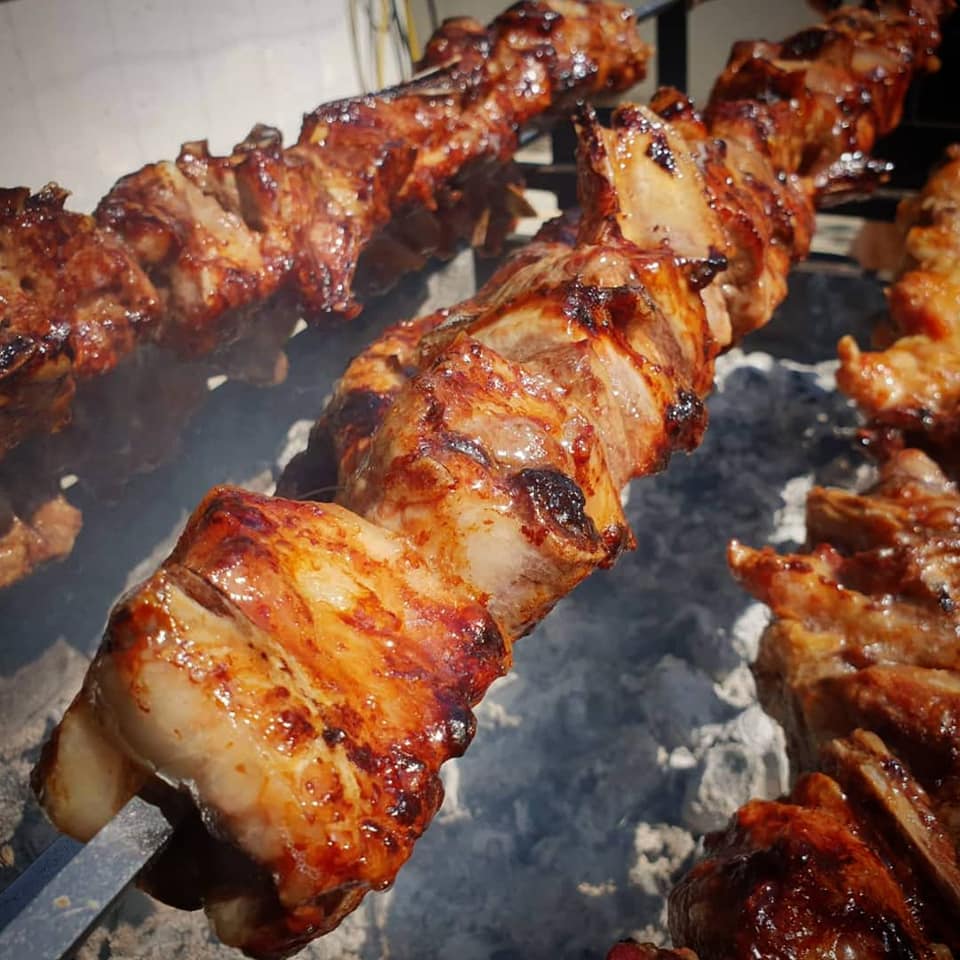
Makarounia tou fournou
Traditional homemade oven pasta made by pasta cream and meat for ground pork, “makarouniatoufournou” in Cypriot “μακαρούνια τουφούρνου”
Brandy Sour
The national cocktail of the island is undoubtedly the famous Brandy Sour, and although it is also enjoyed in other parts of the world, the Cypriot version is unique for the Cypriot brandy used in it and its interesting, royal origins!
The cocktail is made with Cypriot brandy – which is milder than Cognac or Armagnac – lemons (fresh or squash), Angostura bitters, soda water (or lemonade) and ice.
Cyprus coffee

Cyprus coffee is a characteristic part of the island’s coffee-shop culture, and preparing this strong brew takes a little skill to perfect!
Made of finely ground coffee beans,‘cooked’ in a small, long handled pot called a ‘mbriki’.
The coffee is best sipped slowly. The tricky part is then ensuring that you take the coffee off the boil at exactly the right time to ensure that it forms a frothy top called ‘kaimaki’.
Commandaria
Cyprus can proudly lay claim to the world’s oldest wine still in production – that of the delicious sweet dessert wine Commandaria.

Commandaria is made from sun-dried grapes of the varieties “Xynisteri” ( white grape[2] cultivated on the island of Cyprus) and “Mavro”( red grape cultivated on the island of Cyprus)
No visit to the island is complete without picking up a bottle to take home, not just as a drink, but also as a sweet piece of the island’s history!
Cyprus wine
The island has a long-standing tradition of winemaking that dates back to Ancient Greek, Roman and Egyptian times, as evidenced by archaeological finds of old wine jugs at the Lemesos (Limassol) villages of Pyrgos and Erimi that are believed to be over 6.000 years old. The grape varieties of the island are some of the oldest in the world, with the sweet dessert wine of Commandaria (Commandaria) remaining the oldest named wine still in production.

There are seven wine routes on the island and these are AkamasLaona, VouniPanagias – Ambelitis, Pitsilia, and the Wine Villages of Lemesos (collectively known as ‘krasochoria’ meaning ‘wine villages’). They all produce both red and white wines.
The two main local grape varieties are those of Mavro (black) and Xynisteri (white). Xynisteri is the most widespread white grape variety and produces pale, light wines with a low alcohol content (11-11.5% volume). Mavro (red) is large and juicy, producing dull colour wines with a light taste. When Mavro and Xynisteri are blended together they make Commandaria, and they are also used together in the production of the national spirit, Zivania.
Other local grape varieties include the ancient Maratheftiko and Ofthalmo (red), whilst foreign grape varieties are also grown on the island, including Chardonnay, Muscat of Alexandria, Palomino, Riesling, Sauvignon Blanc and Semillon (white), and Alicante Bouschet, Cabernet Franc, Cabernet Sauvignon, Cinsaut, Grenache Noir, Mataro and Shiraz (red).
Zivania

With an alcohol content of 40-99%, it is no surprise that the island’s national drink of Zivania is also referred to as ‘firewater’!
The strong drink dates back to the 14th century when the island was under Venetian rule and is still made in the same tradition today. Grape pomace (remains such as pulp, peel, stalks and seeds) is mixed with high-quality dry wines made from the indigenous grapes of Mavro (black) and Xynisteri (white), then distilled and mellowed for a long period.
Distillation takes place in a cauldron (‘kazani’) with three different processes producing different qualities and intensity of the drink. The resulting liquid is clear and highly potent and can be drunk as an aperitif – best served cold from the freezer.





